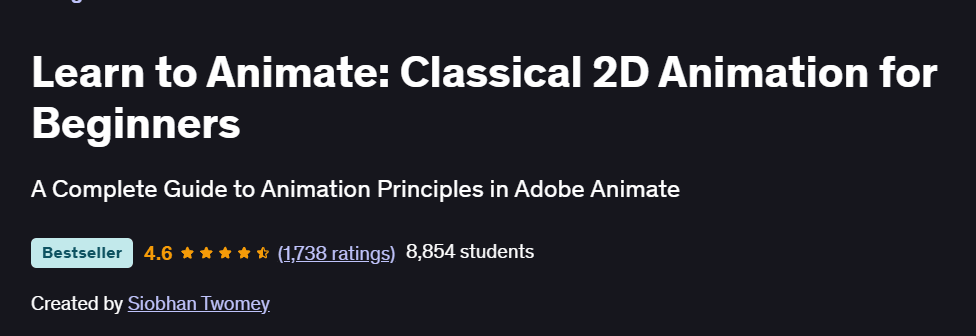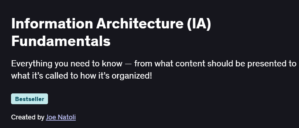What will you learn in Learn to Animate: Classical 2D Animation for Beginners Course
Grasp core animation principles: timing, squash & stretch, anticipation, and follow-through
Master keyframing workflows in After Effects (or your chosen animation software)
Create smooth motion using easing, motion paths, and graph-editor adjustments
Design and animate characters with simple rigs, puppeting tools, and layered compositions
Export polished animations for web, broadcast, and social media in appropriate codecs
Program Overview
Module 1: Animation Foundations & Software Setup
⏳ 1 hour
Topics: Twelve principles of animation overview, UI tour of After Effects (or equivalent)
Hands-on: Set up your workspace, import assets, and create your first animated bounce
Module 2: Keyframes & Timing
⏳ 1.5 hours
Topics: Setting keyframes, frame rates, timing charts, spacing vs. timing
Hands-on: Animate a ball bouncing with correct timing and spacing
Module 3: Easing & Graph Editor Techniques
⏳ 1 hour
Topics: Ease In/Out, custom bezier curves, velocity graphs
Hands-on: Refine your bounce animation using the graph editor for natural motion
Module 4: Squash, Stretch & Overlap
⏳ 1 hour
Topics: Exaggeration principles, squash & stretch mechanics, secondary motion
Hands-on: Apply squash & stretch to a character limb and add overlapping arm movement
Module 5: Motion Paths & Puppet Tools
⏳ 1 hour
Topics: Creating and editing motion paths, using puppeteer pins for organic movement
Hands-on: Animate a character walking along a curved path with puppet-pin joints
Module 6: Character Rigging Basics
⏳ 1.5 hours
Topics: Simple IK rigs, parenting layers, null-object controllers
Hands-on: Rig a two-layer character (torso + limbs) and animate a waving cycle
Module 7: Text & Shape Animation
⏳ 1 hour
Topics: Text animators, shape-layer operations, trim-paths, path-text techniques
Hands-on: Create an animated title reveal using trim-paths and offset properties
Module 8: Effects, Parenting & Precomps
⏳ 1 hour
Topics: Using effects for motion (wiggle, particle systems), pre-composition best practices, layer parenting
Hands-on: Build a firefly particle effect and nest it into a night-scene precomp
Module 9: Rendering & Export Workflows
⏳ 45 minutes
Topics: Render Queue vs. Media Encoder, codec selection, alpha-channel exports
Hands-on: Export your final animation as an H.264 MP4 and a transparent-background MOV
Module 10: Final Project – Short Animated Scene
⏳ 2 hours
Topics: Storyboarding, shot planning, layering your scene, final polish
Hands-on: Produce a 5–10-second character animation loop including background and simple sound sync
Get certificate
Job Outlook
Animation skills are sought after in film, broadcasting, advertising, and game studios
Roles: Motion Graphics Artist, 2D Animator, Character Animator, Broadcast Designer
Freelance animators can charge $50–$150+ per second of finished animation; studio salaries range $50,000–$80,000+ annually
Mastering these workflows accelerates work in explainer videos, UI animations, title sequences, and social media content
Specification: Learn to Animate: Classical 2D Animation for Beginners
|
FAQs
- No prior experience is required; the course is designed for beginners.
- It introduces classical 2D animation principles step by step.
- Hands-on exercises help learners understand basic sketches, frames, and motion.
- Basic familiarity with pencils, paper, or digital drawing tools can help but is not mandatory.
- By the end, learners can create simple 2D animations using foundational animation techniques.
- Yes, the course covers key animation principles such as timing, spacing, and anticipation.
- Learners practice creating smooth and believable movement using keyframes.
- Techniques include squash and stretch, follow-through, and arcs to enhance realism.
- Hands-on exercises reinforce understanding of how objects and characters move naturally.
- Advanced timing techniques may require additional practice.
- Yes, the course teaches animating both characters and inanimate objects.
- Learners practice frame-by-frame animation and applying motion principles to sketches.
- Techniques include walking cycles, gestures, and expressive movements for characters.
- Hands-on exercises help bring drawings to life with motion and personality.
- Advanced character animation may require additional study and practice.
- Yes, the course introduces storyboarding and planning sequences before animating.
- Learners practice sketching scenes, planning shots, and mapping key actions.
- Techniques include organizing frames for narrative flow and visual storytelling.
- Hands-on exercises help learners plan animations efficiently before creating final frames.
- Advanced storyboarding may require additional practice and creativity.
- Yes, learners can create simple animation projects suitable for showcasing skills.
- Projects include short sequences, character motions, and basic animated scenes.
- Hands-on exercises provide practical examples to demonstrate proficiency in 2D animation.
- Portfolio-ready projects help learners apply for internships, freelance work, or animation jobs.
- Advanced portfolio projects may require additional work and creative exploration.





